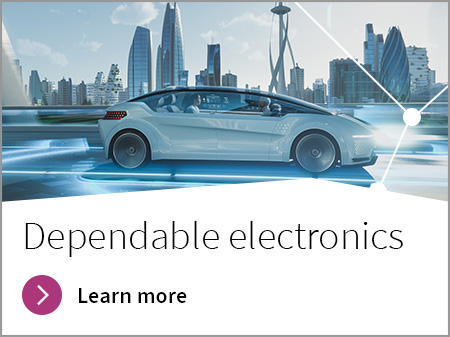Secondary Power Distribution Centers
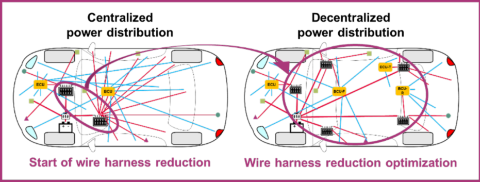
Today, one of the major challenges facing designers is the need of wire harness optimization to reduce its significant cost, length, weight and complexity. A possible solution is the transformation of the power distribution system from a centralized to a decentralized architecture.
In a first step, the central relay & fuse box may split into front, left, right and rear. But the location is restricted to easily accessible areas to limit labor cost in case of relay or fuse malfunction. To enable higher reliability, diagnose capability, protection features and smaller size, the secondary power distribution is getting partly or fully electrified. The electrical part of the secondary power distribution is no longer called relay & fuse box, but secondary Power Distribution Centers (secondary PDCs), which can get located anywhere in the vehicle, even in non-accessible areas.
Each secondary PDC is a functional block with supply, control, communication and sense & actuation functions. Infineon provides a complete chipset solution for the primary PDC to simplify design-in with scalable product families.
If we have a look at the generations of the Power Distribution System, the decentralization and partly or fully electrification of the secondary power distribution starts already in generation 2:
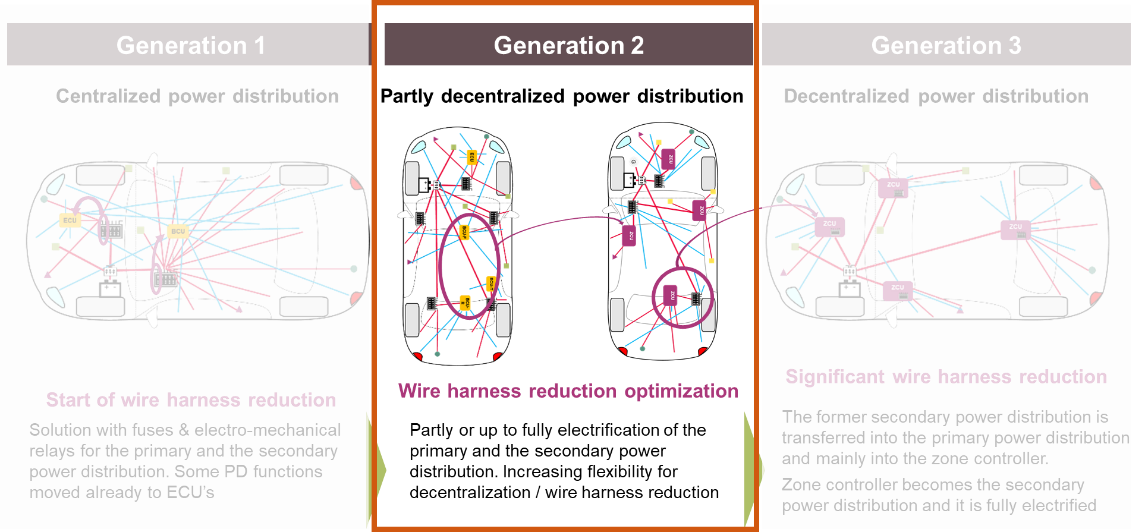
On the one hand side, ADAS/AD requirements are forcing the electrification of the primary power distribution with the introduction of safety elements. On the other hand, the transformation of the IVN to domain/ zone architecture is providing a decentralized infrastructure to electrify the secondary power distribution.
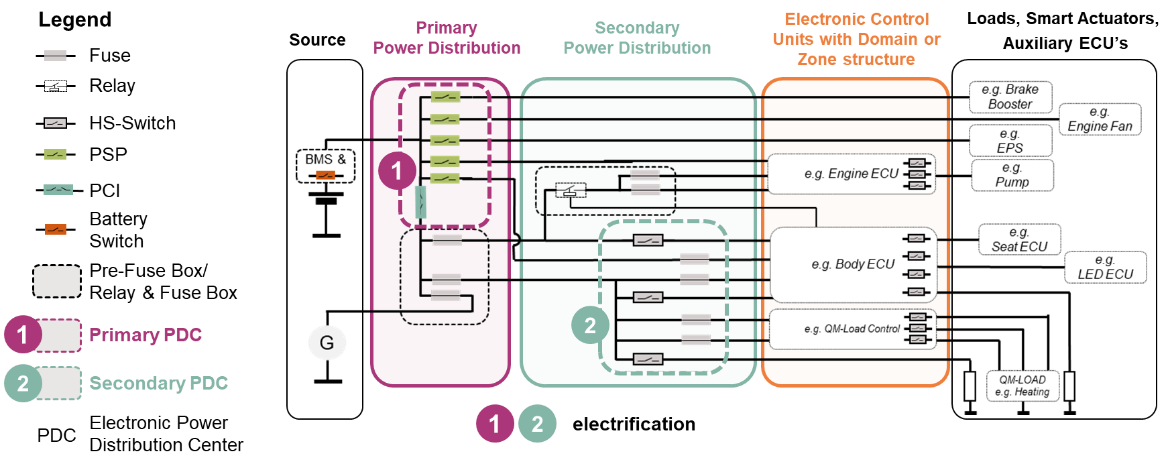
The electrical part of the secondary power distribution is no longer called relay & fuse box, but secondary Power Distribution Centers (secondary PDCs), which can get located anywhere in the vehicle, even in non-accessible areas.
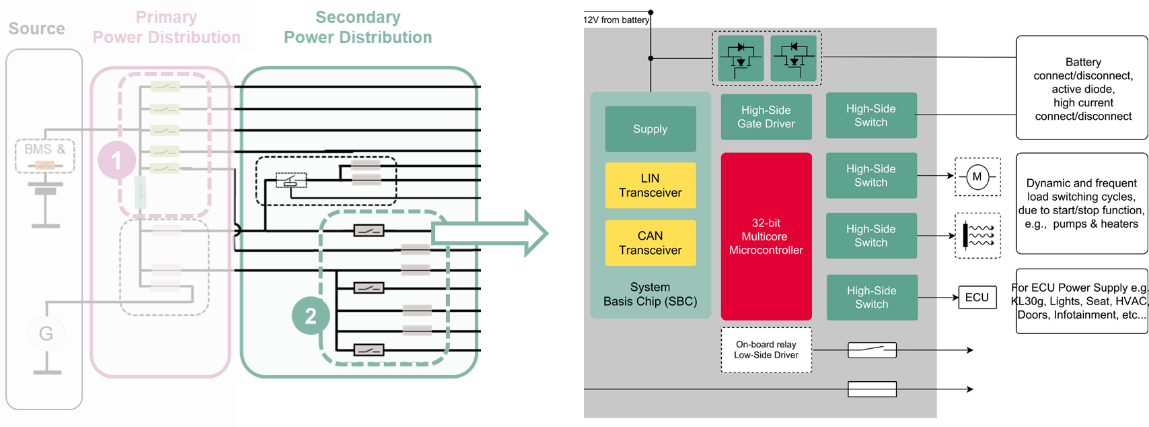
If we have a look at the generations of the Power Distribution System, the integration of the secondary power distribution and IVN is realized in generation 3 with zone controllers:
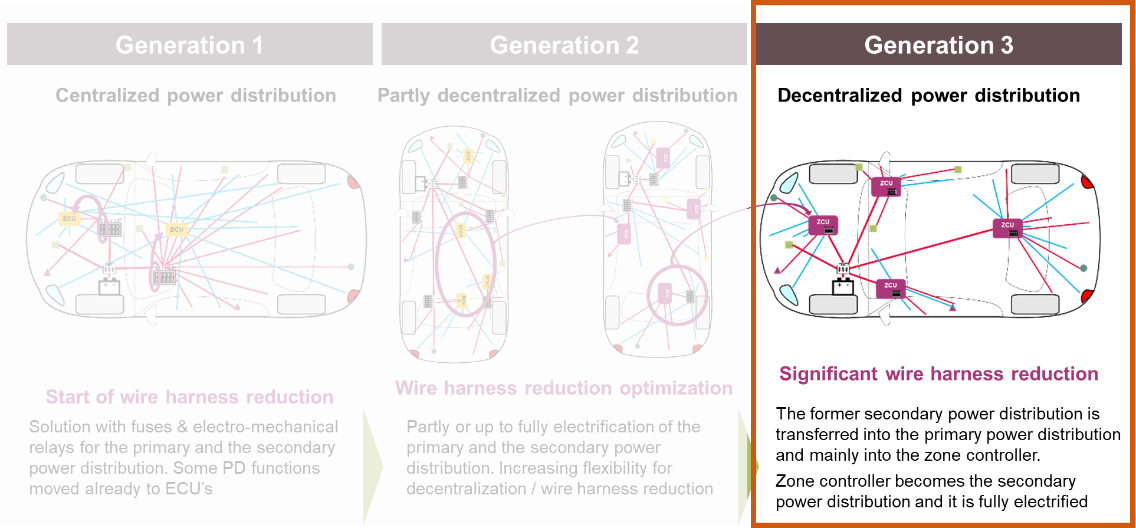
Characteristic for the generation 3 is the transfer of the former secondary power distribution into
the primary power distribution and mainly into the Zone Controller and fully electrified:
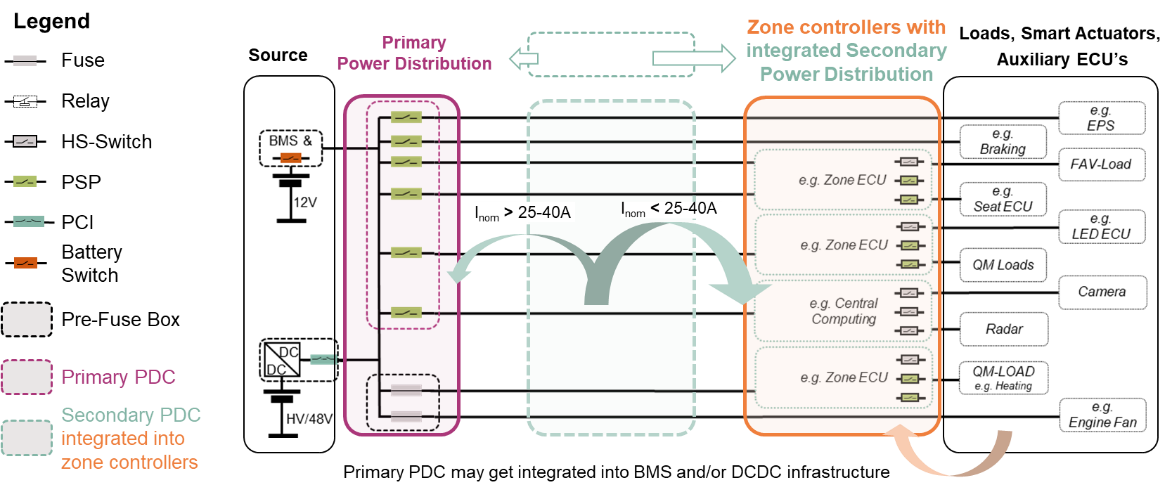
The corresponding functional block of the zone controller is very similar to a Body Control Module with integrated gateway, but every OEM has its own flavors and degree of domain integrations.
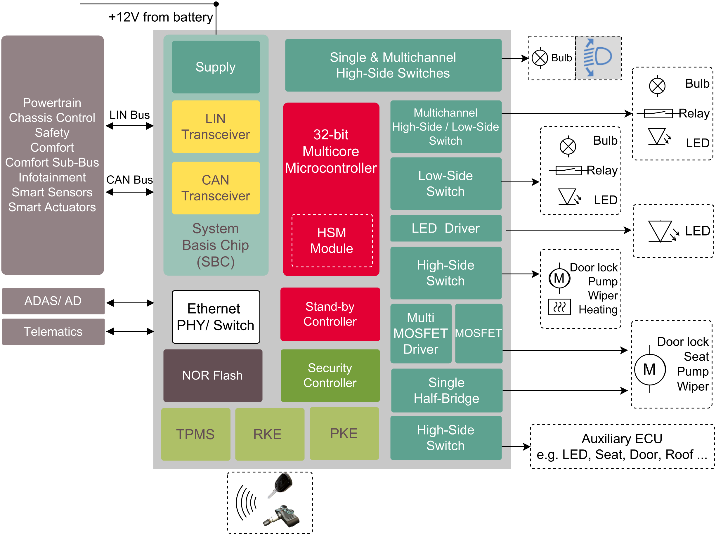
Customer benefits
We support with a two decades expertise in Power Distribution applications, know how in relay & fuse replacement, products with high energy capability, technical documents, evaluations boards and simulation models to enable easy design-in & fast time to market.
- Relay & Fuse replacement Application Notes
- Relay & Fuse replacement Whitepaper
- Arduino shields for easy to use device evaluation
- Simulation models for virtual prototyping and system evaluation
Semiconductor based Intelligent Power Distribution is replacing classical electro-mechanical relay & fuse boxes. We offer a broad range of scalable product families to enable module designs scalable across the manifold variations of OEM platforms.
- Modular family concepts with respect to performance, memory, peripherals and
safety & security implementation. - Wide range of feature set from basic to high performance within the product families in pin-to-pin compatible packages with the same footprint.
Modern OEM platforms do have billions of variants in wire harness and an increasing number of load configurations in the Power Distribution. To handle such a complexity and often short notice modifications, we offer product families with unique flexibility.
- Power product families are highly scalable in current, energy and power dissipation with pin-to-pin compatible packages and the same footprint.
- Product families with SPI enable the configuration of e.g. channel parallelization, restart strategy, slew rate, protection and diagnosis.
Trends like Safety Application availability and Automated Drive functions introduce Functional Safety requirements in Power Distribution. We offer for module designs product families qualified correspondingly and supporting required ASIL levels.
- AEC-Q 100/101 qualification, short circuit robustness & low ppb rates and several product families qualified according to AEC-Q100 Grade 0.
- Product families for safety critical applications are available to support ASIL-B or ASIL-D
according to ISO26262 Functional Safety.
For product related support material, please have a look into the product pages
Supply and communication
OPTIREGTM System Basis Chip (SBC)
Microcontroller
TraveoTM II and/ or AURIX™ TriCore™
High-Side Switches, Gate Driver and MOSFET
- We will demonstrate this advanced feature using our Infineon PROFET™ Load Guard demonstrator, providing you a visual representation of the feature in action.
- Additionally, we will explore the various use cases in modern vehicle power distribution systems.
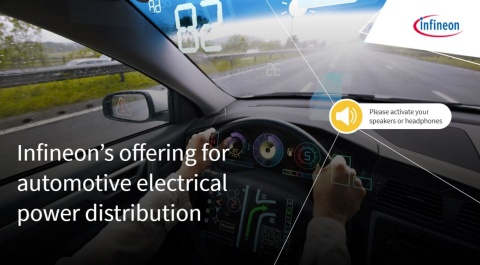
In this training, you will:
- Indicate what an electrical power distribution center is and describe what solutions Infineon offers for
- Explain why relays and fuses are being replaced with semiconductors and identify the devices that Infineon provides for replacing
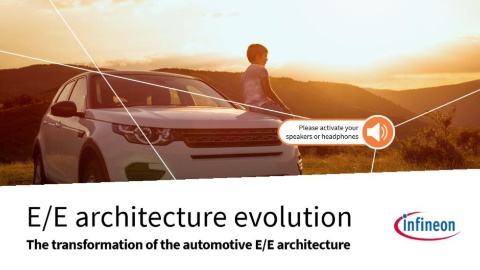
Description:
- Explain how the major automotive trends are shaping the evolution of electrical and electronic or E/E architectures in cars
- Identify the trending E/E architecture concepts and their impact on networking technologies and recognize the solutions that Infineon provides to support current and future E/E architectures
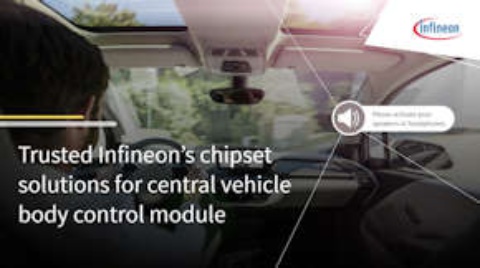
In this training, you will:
- Understand what a body control module is and what solutions Infineon offers for standard and high-end body control modules
- Discover why relays and fuses are being replaced with smart switches and identify Infineon's alternative devices

